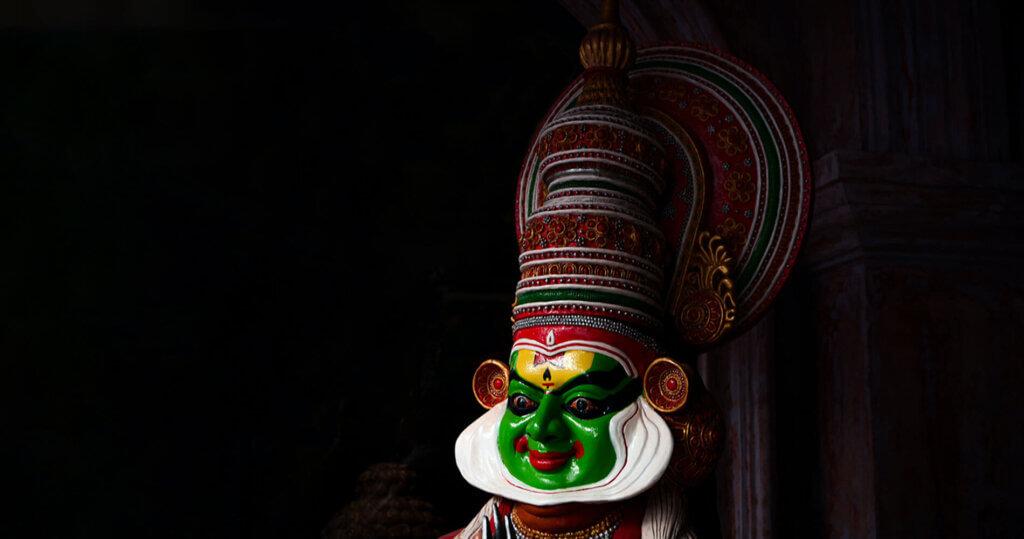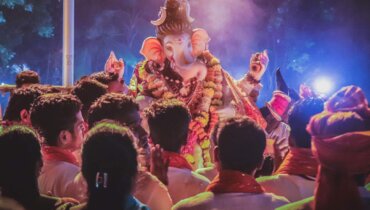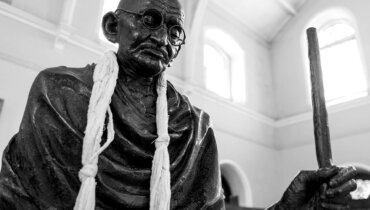
What is Kathakali?
Katha means story and kali means to play or perform in Sanskrit. Kathakali is a performative religious dance that originated in the south of India. It is a classical art form that became its own distinct genre in the 16th and 17th centuries.
Interestingly enough, though it has religious undertones, Kathakali was actually created with the stage in mind. It was developed in courts and theatres and aims to tell a story.
Behind the Scenes
Kathakali is probably so well-recognized around the world because of its vivid makeup, face masks, and costumes. Typically, the dancers that perform are men or young boys, playing both male and female roles.
A traditional Kathakali performance could start as early as dusk and last until dawn. They would also be outdoors. In recent times for a modern audience, sometimes the introductory pieces get taken out to make a shorter performance. These only last for about 2-4 hours. If you’re interested, sometimes if you arrive around an hour early to the show, you can see how the actors apply all the makeup.
During the performance, you will see vocalists who will sing the dialogue and dancers who interpret the words into hand movements, facial expressions, and body movements.
Different colors and features tell the audience what kind of character is being portrayed. Traditionally, blue was reserved for deities like Rama and Lakshmana. Monkeys or demons would wear face masks. Today’s Kathakali is a little different. Green is the color of nobles and the divine. Black is for females or for cruel characters, depending on the other makeup used. Features like having a beard would signify a wise person.
Themes
A common theme in Kathakali is good overtaking evil. This is because, early on, it took its inspiration from the epics like the Mahabharata. Another very common thing that these plays incorporated was the element of self-reflection. More often than not, audiences would be reflecting on human nature throughout the play.
Fun Facts
Over 500 plays are in existence with the majority of these being written before the 20th Century.
Women only started dancing kathakali in the 1970s. It is still a very male-dominated art form today.
Kathakali has turned into a worldwide dance phenomenon with schools all over India, Europe, and the USA.
Some modern Kathakali dances are adaptations of Shakespeare’s plays.
It is said that there are 24 basic mudras, or hand movements, in traditional Kathakali dance.
The white border on the actors’ faces is called chutti. This was made with a rice paper paste until the 1960s.
If catching a live Kathakali performance is on your bucket list, you’re not alone. In the meantime, share your love for the art form by sporting a Kathakali T-shirt, tote bag, or magnet. And if you have seen a show, let us know your thoughts in the comments.




